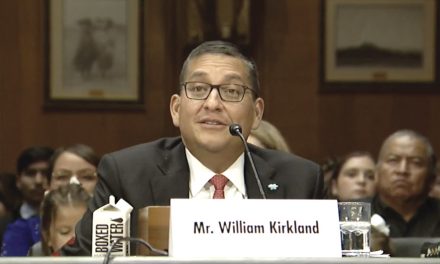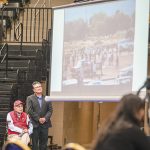
50 Years Ago: Battle over peyote divides council
The 1967 Navajo Tribal Fair was held 50 years ago and the local media announced the following week that it was one of the goriest weekends for the reservation with five people dying and 29 injured in accidents on reservation roads.
The fatal accident occurred Sunday morning nine miles west of Yah-Ta-Hey, New Mexico on State HIghway 264.
Dead at the scene were Grace Woody, 19, Crownpoint; Rex Manygoat, 20, Tohatchi, New Mexico; Herman Denetdale, Tohatchi; and Leo Arviso, Gallup. Boy Arthur Nez, 23, Tohatchi, died in the Gallup Public Health Service Hospital several hours after the crash.
Navajo Police said it was a head-on collision and said weather may have been a contributing factor since it was raining heavily when the accident occurred.
Navajo Tribal Chairman Raymond Nakai later expressed his sorrow at what happened and said this pointed out once again that the two roads that have the largest number of fatalities are U.S. Highway 666 (now 491) between Gallup and Farmington and State Highway 264 between Yah-Ta-Hey and Window Rock.
And while there was no indication that alcohol played a role in that accident, Nakai once again urged the Council members to pass legislation that would deal with the growing number of accidents on the two highways.
Even in those early years, U.S. Highway 666 was getting a reputation as a death road and the tribe would later take up the cause and urge the state to widen 264.
Nakai called upon the Fair Office to do something to make the roads safer but no one seemed to know what to do so Nakai said he ought to create a commission, which is what he did and eventually the need to have 264 and 666 repaired seemed to vanish.
In other news, the councilman from Indian Wells, Dudley Yazzie, had introduced legislation, which would, for the first time, legalize the use of peyote as a sacrament in services conducted by the Native American Church on the Navajo Reservation.
This was expected to be hotly debated when it got to the Council floor during the fall session in October and would once again see a battle between the “Old Guard,” that group that opposed Nakai, and the peyote faction, which had Nakai’s support.
This was being viewed as a real test of just how powerful Nakai was because besides the Old Guard there were more than a dozen Council delegates who had gone on record as opposing any changes in tribal law when it came to the use of peyote.
Nakai campaigned on this issue and said he will fight those anti-peyote groups with any resources at his disposal.
The law at that time, making the use of peyote for any reason a crime, was passed in 1940. Anyone found using it could be sentenced to nine months in a tribal jail and a $100 fine was in place for anyone convicted of bringing peyote into the reservation.
The 1940 resolution said peyote was not connected with any Navajo religious practice and is “harmful and foreign to our traditional way of life.”
That law was amended by the Navajo Tribal Council in 1956. The new law said any peyote confiscated by Navajo Police “shall beÊforfeited to the Navajo Tribe which will then destroy it.”
The supporters for the use of peyote said they planned to bring up a recent California Supreme Court decision that threw out the conviction of two Navajos who had been found in possession of peyote. Their ruling was based on the rights given in the U.S. Constitution to freedom of religion.
The opponents were expected to argue that allowing the use of peyote at NAC services would lead to many Navajos using it outside the church and that would result in other drugs coming onto the reservation, which would lead to all kinds of problems with Navajo youth.
The issue was so much in dispute that no one was able to say which side was favored but the one thing that supporters of peyote had in their favor, besides the support of Nakai, was that at least 30 of the 74 members of the Council were NAC members and they were expected to vote in favor of the proposal.
And finally, the rodeo world was saddened to hear of the death of Raymond Holyan, 42, a well-known champion all-around cowboy who was found dead in a corral just west of the Standing Rock Chapter House. He had been shot to death.
Navajo Police said he had been shot in the neck with a .22 caliber rifle. The bullet severed his windpipe. He was still holding the rifle when his body was found, said police.
His body was found by his wife who reported it to the school principal who then called a local trader who called the police.
For more than two decades, Holyan had been a champion rodeo cowboy, competing in timed events such as calf roping, steer wrestling and team roping. He was reported to be unemployed at the time of his death.
To read the full article, pick up your copy of the Navajo Times at your nearest newsstand Thursday mornings!
Are you a digital subscriber? Read the most recent three weeks of stories by logging in to your online account.








 Highway 264,
Highway 264, I-40, WB @ Winslow
I-40, WB @ Winslow